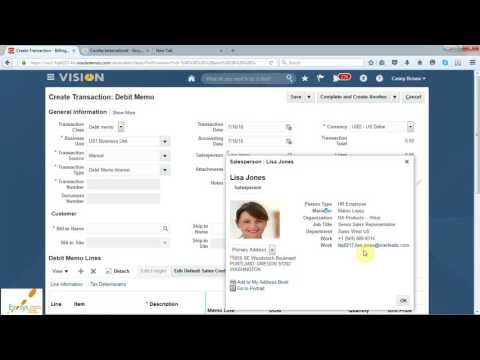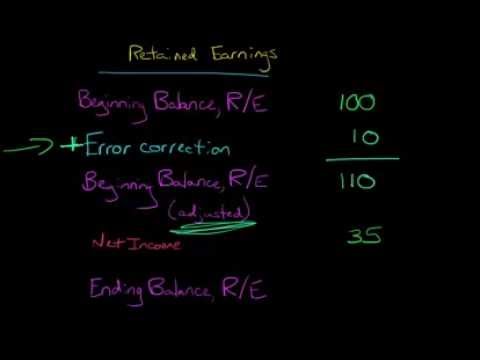Content

There is one more point about the use of the contra account, Allowance for Doubtful Accounts. In this example, the $85,200 total is the net realizable value, or the amount of accounts anticipated to be collected. However, the company is owed $90,000 and will still try to collect the entire $90,000 and not just the $85,200. The first entry reverses the bad debt write-off by increasing Accounts Receivable and decreasing Bad Debt Expense for the amount recovered. The second entry records the payment in full with Cash increasing and Accounts Receivable decreasing for the amount received of $15,000.

While the direct write-off method is simple, it is only acceptable in those cases where bad debts are immaterial in amount. In accounting, an item is deemed material if it is large enough to affect the judgment of an informed financial statement user. Accounting expediency sometimes permits “incorrect approaches” when the effect is not material. An uncollectible accounts receivable is an invoice for goods or services that the customer has not paid, and is unlikely to ever be collected.
Objective 2 — Explain how Accounts Receivable are Recognized in the Accounts
It debits Uncollectible Accounts Expense, thus recording the operating expense in the proper period. The credit is to an account called Allowance for Uncollectible Accounts. In accrual-basis accounting, recording the allowance for doubtful accounts at the same time as the sale improves the accuracy of financial reports. The projected bad debt expense is properly matched against the related sale, thereby providing a more accurate view of revenue and expenses for a specific period of time. In addition, this accounting process prevents the large swings in operating results when uncollectible accounts are written off directly as bad debt expenses.

The desired $6,000 ending credit balance in the Allowance for Doubtful Accounts serves as a “target” in making the adjustment. The Allowance for Uncollectible Accounts, therefore, serves as a contra-asset account on the balance sheet with a credit balance. Other names for this account are Allowance for Doubtful Accounts and Allowance for Bad Debts.
Example of Allowance for Doubtful Accounts
Journalize the adjusting entry for uncollectible accounts as of November 30. The allowance for doubtful accounts is a contra account that records the percentage of receivables expected to be uncollectible, though companies may specifically trace accounts. Journalize the year-end adjusting entry for bad debts on the basis of the aging schedule. Show the T-account for the Allowance for Bad Debts at December 31, 2018.
What is the journal entry for uncollectible accounts?
To “write off” an account under this method we use the following journal entry: DR: Bad Debt Expense (for the amount uncollectible). CR: Accounts Receivable (for the amount uncollectible). This journal entry gets rid of the expectation that we will receive these funds and records this amount as an expense.
Uncollectible accounts expense is an operating expense that a business incurs when it sells on credit. We classify uncollectible accounts expense as a selling expense because it results from credit sales. Other accountants might classify it as an administrative expense because the credit department has an important role in setting credit terms. Sales and the ultimate decision that specific accounts receivable will never be collected can happen months apart. During the interim, bad debts are estimated and recorded on the income statement as an expense and on the balance sheet through an allowance account, a contra asset.
2 Accounting for Uncollectible Accounts
Uncollectible accounts receivables require not one, but a series of adjusting entries to ensure that the financial statements properly reflect the current financial condition of a business and uncollected sales from customers. There are three considerations when drafting the adjusting entries for an uncollectible receivable. The final issue is whether your business has an allowance for uncollectible accounts. The credit balance in Allowance for Uncollectible Accounts before making this entry represented potential uncollectible accounts not yet specifically identified. Debiting the allowance account and crediting Accounts Receivable shows that the firm has identified Smith’s account as uncollectible.
- Just as every company must have current assets such as cash and accounts receivable to operate, every company incurs current liabilities in conducting its operations.
- Based on previous experience, 1% of accounts receivable less than 30 days old will be uncollectible, and 4% of those accounts receivable at least 30 days old will be uncollectible.
- Notice that once again that there is no effect on total assets by either of the above two entries.
- Allowance for doubtful accounts had a balance of $0 on December 31, 2017.
- Note that if a company believes it may recover a portion of a balance, it can write off a portion of the account.
That way, your books and financial statements will more accurately reflect your true financial picture. At the end of every year, you should evaluate your accounts receivable and adjust your allowance for bad debts accordingly. Recording the uncollectible accounts adjustment A company that estimates uncollectible accounts makes an adjusting entry at the end of each accounting period.
Visit the Bookstore
If actual experience differs, then management adjusts its estimation methodology to bring the reserve more into alignment with actual results. The Aging Method — also known as the balance sheet percentage of receivables for calculating bad debt method, uses information regarding how long receivables have been outstanding to estimate uncollectible accounts. Using the example above, let’s say that a company reports an accounts receivable debit balance of $1,000,000 on June 30. The company anticipates that some customers will not be able to pay the full amount and estimates that $50,000 will not be converted to cash. Additionally, the allowance for doubtful accounts in June starts with a balance of zero. In applying the percentage-of-sales method, companies annually review the percentage of uncollectible accounts that resulted from the previous year’s sales.
Bad Debt Expense increases , and Allowance for Doubtful Accounts increases for $48,727.50 ($324,850 × 15%). Let’s consider that BWW had a $23,000 credit balance from the previous period. Compute bad debt estimation using the balance sheet method of percentage of receivables, where the percentage uncollectible is 9%.
Accounting For Uncollectible Receivables
Companies usually do not charge interest on amounts owed, except on some past-due amounts. Determine the amount needed to give the allowance for doubtful accounts a credit balance of $750. If the allowance for doubtful accounts balance were a debit of $100, you would need to credit the account by $850. An allowance for bad adjusting entry for uncollectible accounts debt is a valuation account used to estimate the amount of a firm’s receivables that may ultimately be uncollectible. Accounts use this method of estimating the allowance to adhere to the matching principle. The matching principle states that revenue and expenses must be recorded in the same period in which they occur.
Risky customers might be required to provide letters of credit or bank guarantees. Interest Revenue is shown under “Other Revenues and Gains” in the nonoperating section of the income statement. No interest revenue is reported when the note is accepted because the revenue recognition principle does not recognize revenue until earned.
What is the journal entry to adjust uncollectible accounts involves a credit to?
The adjusting journal entry includes a debit to the Allowance for Doubtful Accounts and a credit to Accounts Receivable for the amount written-off.